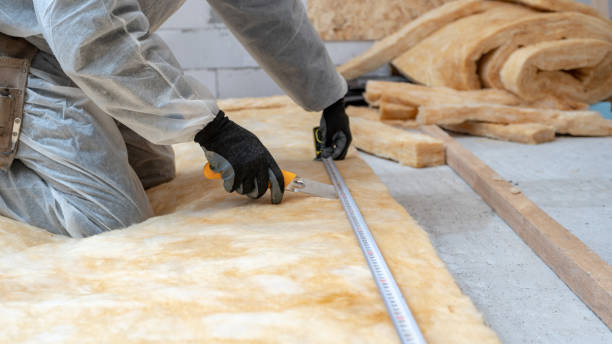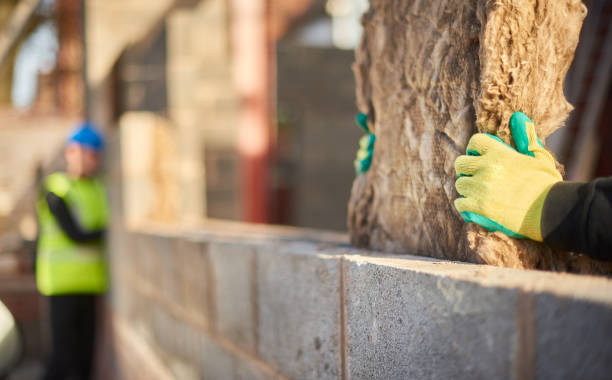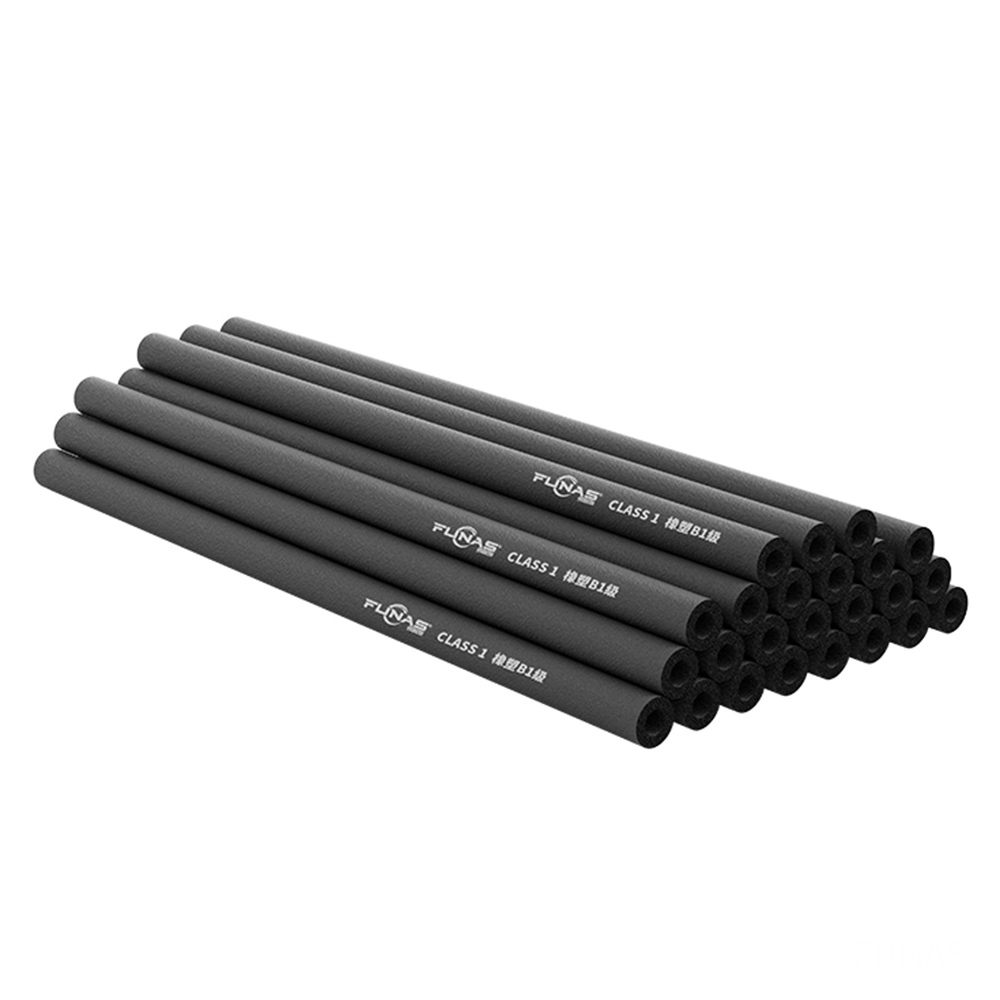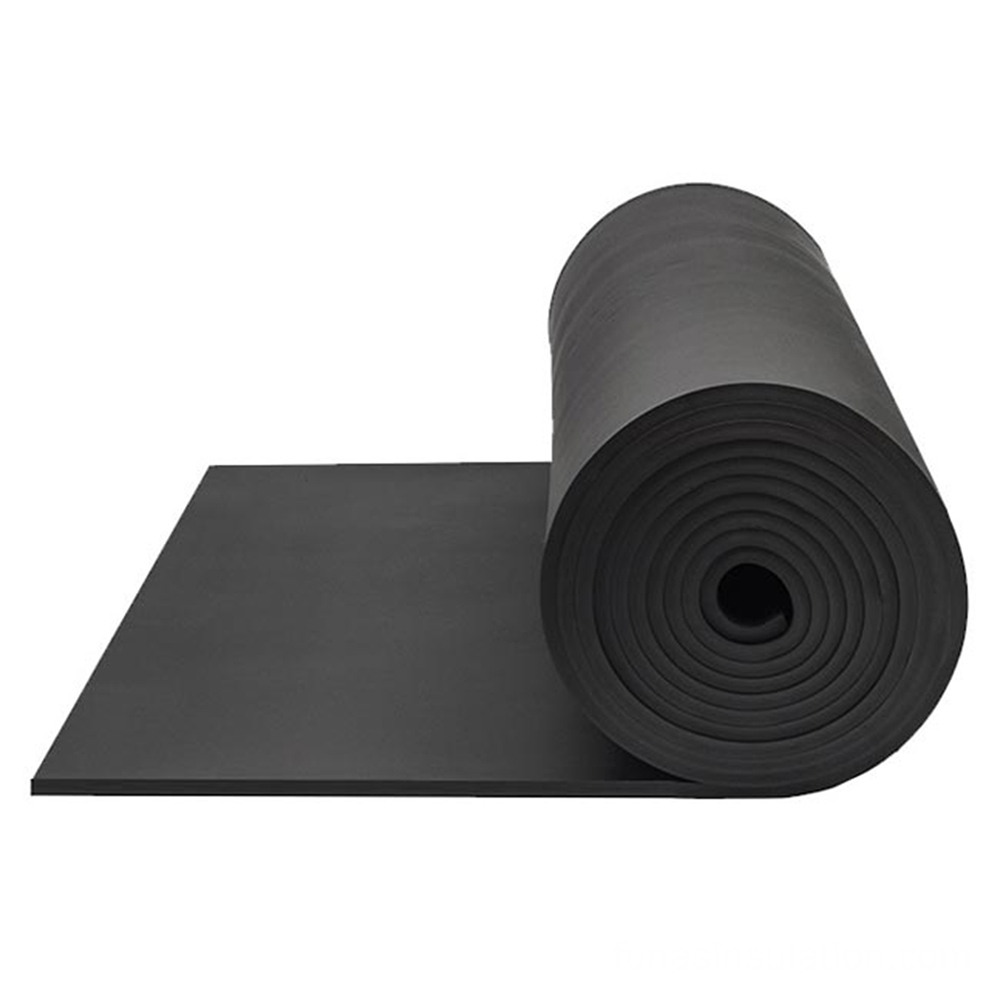Preface
Modern construction and industrial applications depend heavily on insulation material because it serves to decrease heat transfer while enhancing energy efficiency. Insulation serves as an essential factor for maintaining comfortable indoor conditions by sustaining building temperatures throughout winter and summer seasons. The vital role of insulation extends beyond thermal regulation because it enhances soundproofing capabilities and provides fire protection and moisture management which makes it essential for sustainable and efficient building design.
This guide provides an overview of insulation materials while discussing their applications together with the available types. The article will guide readers through insulation selection while showcasing the high-quality solutions provided by Funas as a leading manufacturer. This article provides you with complete knowledge about insulation materials alongside their industrial significance.
What is Insulation Material?
Any product or substance used to block heat transfer and sound waves and electric power flows constitutes insulation material. The main purpose of insulation is to establish a protective barrier which reduces energy loss to maintain efficient operation of buildings and systems. The main characteristic of insulation materials is their ability to resist heat flow through their low thermal conductivity. The low thermal conductivity of these materials makes them suitable for temperature control applications throughout residential, commercial and industrial facilities.
Insulation performance evaluation depends on the R-value measurement that shows how well it blocks heat transmission. Better insulation performance occurs when R-values increase. Fiberglass along with cellulose and spray foam materials serve as popular insulation choices because they provide outstanding heat-blocking abilities. Insulation materials allow designers to customize their properties for various needs, including fire safety and sound dampening and moisture protection, which makes them suitable for different building applications.
What is Important for Insulation?
Multiple elements need evaluation during insulation selection to achieve maximum performance. The R-value stands as the most vital factor because it determines how well the material blocks heat transmission. Other significant factors besides R-value include durability and installation ease together with environmental impact. Materials that resist moisture work best in humid environments, yet fire-resistant options are necessary for industrial applications.
Sustainability is another key consideration. Modern insulation materials incorporate sustainable designs that incorporate recycled or renewable materials. The material must have a service life that matches the project timeline and must require minimal upkeep. Your evaluation of multiple factors will help you select insulation which fulfills current requirements while promoting energy efficiency and environmental preservation.
Applications of Insulation
● Construction Industry: Insulation regulates indoor temperatures and reduces energy costs in residential, commercial, and industrial buildings.
● HVAC Systems: Insulation maintains energy efficiency in heating, ventilation, and air conditioning systems.
● Oil and Gas Industry: Insulation prevents heat loss in pipelines and protects equipment from extreme temperatures.
● Automotive Industry: Insulation reduces noise and controls temperature in vehicles for enhanced comfort.
● Refrigeration and Cold Storage: Insulation maintains low temperatures in refrigerators and cold storage facilities.
● Aerospace Industry: Insulation protects aircraft and spacecraft from extreme temperatures.
● Industrial Equipment: Insulation improves energy efficiency and safety in machinery and equipment.
● Renewable Energy: Insulation enhances the efficiency and lifespan of solar panels and wind turbines.
Types of Insulations
Fiberglass Insulation
Fiber
glass insulation stands as the most popular building material because it provides excellent performance at affordable prices. The product consists of fine glass fibers which manufacturers provide in batts, rolls and loose-fill formats. The thermal insulation capabilities of fiberglass reach 2.2 to 2.7 per inch which allows its use in walls and attics and ceilings. This material stands out as a dependable solution for both residential and commercial construction because it does not burn and remains resistant to moisture. The insulation performs best when properly installed because any installation gaps will decrease its effectiveness.
Cellulose Insulation
Cellulose insulation represents an environmentally friendly solution because it derives from recycled paper materials including newspapers and cardboard. The thermal performance rating of cellulose insulation reaches 3.2 to 3.8 per inch which exceeds fiberglass performance levels. Cellulose finds its application in walls and attics because it can be installed through spraying or blowing. The dense nature of this material creates excellent sound insulation properties. The application of fire retardants becomes necessary for cellulose insulation to meet safety requirements but its performance decreases when it comes into contact with moisture.
Spray Foam Insulation
Spray foam insulation expands when applied to form a complete air-tight barrier while filling all spaces. The insulation value of spray foam reaches 6.0 to 7.0 per inch which makes it one of the best choices for insulation. Spray foam insulation proves its best value for inaccessible locations where professionals typically use it on walls and roofs and basements. The material blocks air leaks, which leads to improved energy efficiency. The installation process requires professional skills because incorrect application leads to poor coverage and diminished performance.
Rigid Foam Board Insulation
Rigid foam board insulation is known for its high R-value (4.0 to 6.5 per inch) and durability. Made from materials like polystyrene or polyisocyanurate, it is commonly used in foundations, walls, and roofs. Its moisture resistance makes it suitable for damp environments, such as basements. Rigid foam boards are also lightweight and easy to cut, simplifying installation. However, they can be more expensive than other options and may require additional fireproofing measures.
Mineral Wool Insulation
Mineral wool insulation, made from rock or slag fibers, offers excellent fire resistance and soundproofing. With an R-value of 3.0 to 3.3 per inch, it is suitable for high-temperature applications, such as industrial equipment and firewalls. Mineral wool is also resistant to moisture and mold, making it a durable choice for various environments. However, its weight and density can make installation more challenging compared to lighter materials like fiberglass.
Reflective Insulation
The mechanism of reflective insulation involves heat reflection instead of heat absorption. The aluminum foil material used for reflective insulation serves buildings in attics and roofs to minimize heat gain during hot weather. Reflective insulation works best when installed with an air gap because the gap improves its heat-blocking capabilities. The lower R-value of reflective insulation is balanced by its heat reflection capability which makes it a beneficial component for energy-efficient building designs.
How to Choose Insulation?
● Determine the R-Value: The R-value indicates the material’s thermal resistance. Choose insulation with an R-value that meets your climate and energy efficiency needs.
● Consider the Application: Different areas (walls, attics, basements) require specific types of insulation. Match the material to the application for optimal performance.
● Evaluate Durability: Select insulation that can withstand environmental factors like moisture, temperature fluctuations, and wear over time.
● Check Installation Requirements: Some materials, like spray foam, require professional installation, while others, like fiberglass batts, are DIY-friendly.
● Prioritize Sustainability: Opt for eco-friendly options, such as cellulose or recycled materials, to reduce environmental impact.
● Assess Cost vs. Benefits: While some materials may have a higher upfront cost, their energy-saving potential can lead to long-term savings.
● Ensure Safety: Choose fire-resistant and non-toxic materials, especially for residential or industrial applications.
● Consult Professionals: Seek expert advice to ensure the insulation meets local building codes and project requirements.
Conclusion
Energy efficiency alongside comfort and safety depend heavily on the use of insulation materials throughout residential and industrial spaces. Each insulation material, including fiberglass and spray foam, brings unique advantages that match particular construction requirements. Your ability to select insulation materials based on their properties and uses enables you to create projects that perform better and sustain longer.
Funas operates as a top manufacturer of insulation materials which delivers high-quality solutions for multiple application needs. Funas uses innovative sustainable practices to produce outstanding performing products that reduce environmental impact. Funas delivers tailored solutions for thermal insulation and soundproofing and fire resistance through its expert capabilities and available resources.
Funas: Top Heat Insulation Materials Manufacturer
Funas operates as a respected insulation material manufacturer that distributes premium
wholesale insulation products through rubber foam alongside mineral wool and glass wool. Funas operates as an innovation and sustainability leader after more than ten years of business experience. The ACMF microfoaming technology combined with advanced manufacturing processes at the company ensures that its products provide superior thermal performance and durability.
The client base of Funas includes companies from construction and automotive and HVAC sectors. The company maintains a worldwide network and dedicated customer service which establishes it as a trustworthy partner for insulation solutions. The insulation industry recognizes Funas as the leader in excellence because the company maintains strict quality control standards and prioritizes eco-friendly practices.
Wholesale Insulation Material: Cost-Effective Solutions
Businesses requiring economical insulation solutions can access wholesale options from Funas that fulfill their extensive needs. The production capacity at Funas exceeds 30,000 cubic meters per year while its team of more than 150 technicians delivers products on time with consistent quality standards. The insulation range together with customization options from Funas makes it a preferred solution for any project size.
| Insulation Material |
Feature |
Application |
Picture |
| Rubber foam pipe/tube |
B1-level foam rubber products can achieve self-extinguishing without causing combustion and have insulation properties. |
HAVC system |
|
| Rubber foam sheet |
High resilience, strong toughness, and not easy to deform, making it ideal for foam insulation sheet applications. |
Wall, Pipeline,Ceiling |
|
| Glass wool roll |
Glass wool insulation roll has good structural fire resistance and can prevent the spread of fire. It will not shrink or fall off after burning. It has excellent structural stability. |
Roof and Walls |
|
| Glass wool panel |
Soft material, easy to carry, simple to construct, easy to cut |
Roof and Walls |
|
| Rock Wool Board |
Rock wool comfort board resists moisture absorption, helping to prevent mold growth and ensuring consistent insulation performance. |
Building Projects, Fireproofing Solutions, Industrial Insulation |
|
| Rock wool blanket/roll |
The rock wool thermal insulation board provides exceptional thermal and acoustic insulation, ensuring energy efficiency and comfort. Paired with the insulation rock wool blanket, it offers enhanced protection against heat and sound while being easy to install and maintain. |
Building Insulation, High-Temperature Insulation, Acoustic Insulation |
|
FAQs
What is insulation made out of?
Insulation materials can be made from a variety of substances, including fiberglass, cellulose, foam, and mineral wool. Each material has unique properties that make it suitable for specific applications.
Is insulation material safe?
Yes, most insulation materials are safe when installed correctly. However, some materials, like fiberglass, can cause irritation if handled without proper protective gear. Always follow safety guidelines during installation.
What happens when you touch insulation?
Touching certain types of insulation, such as fiberglass, can cause skin irritation due to the fine fibers. It’s recommended to wear gloves and protective clothing when handling insulation materials.
Can you remove insulation by hand?
Yes, insulation can be removed by hand, but it’s important to wear protective gear to avoid irritation. For large-scale removal, professional services are recommended to ensure safety and efficiency.
































































